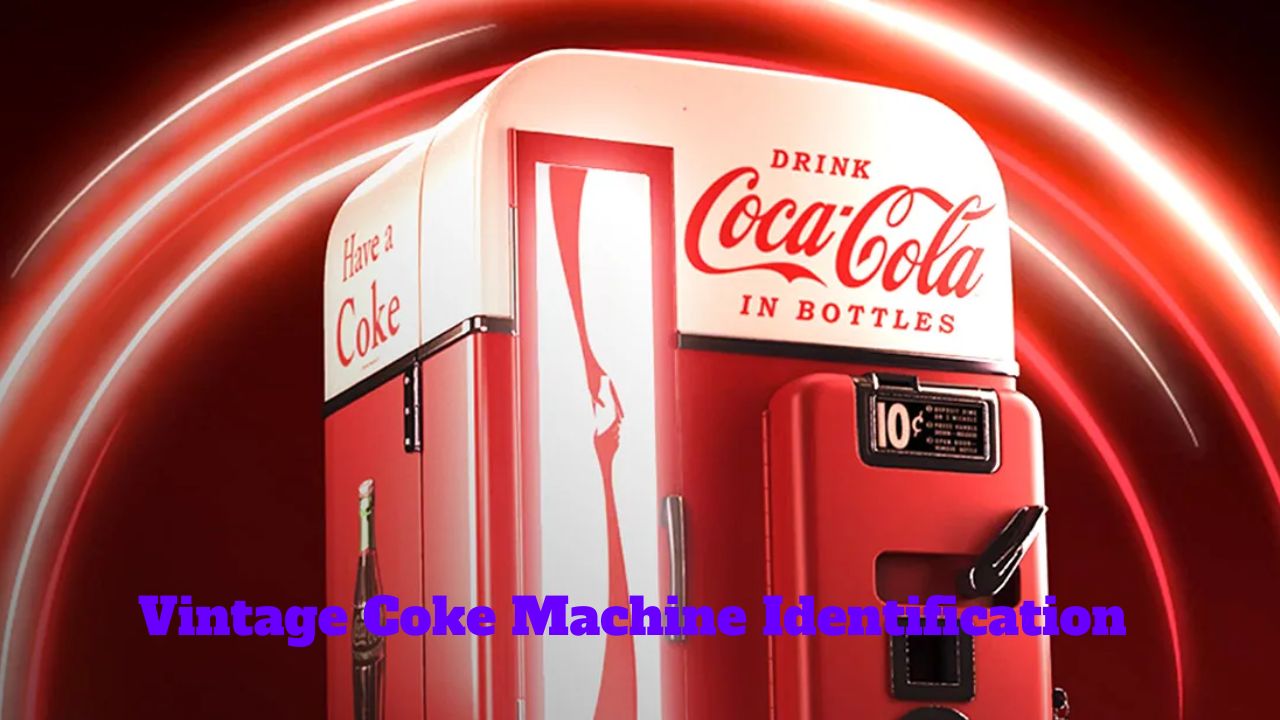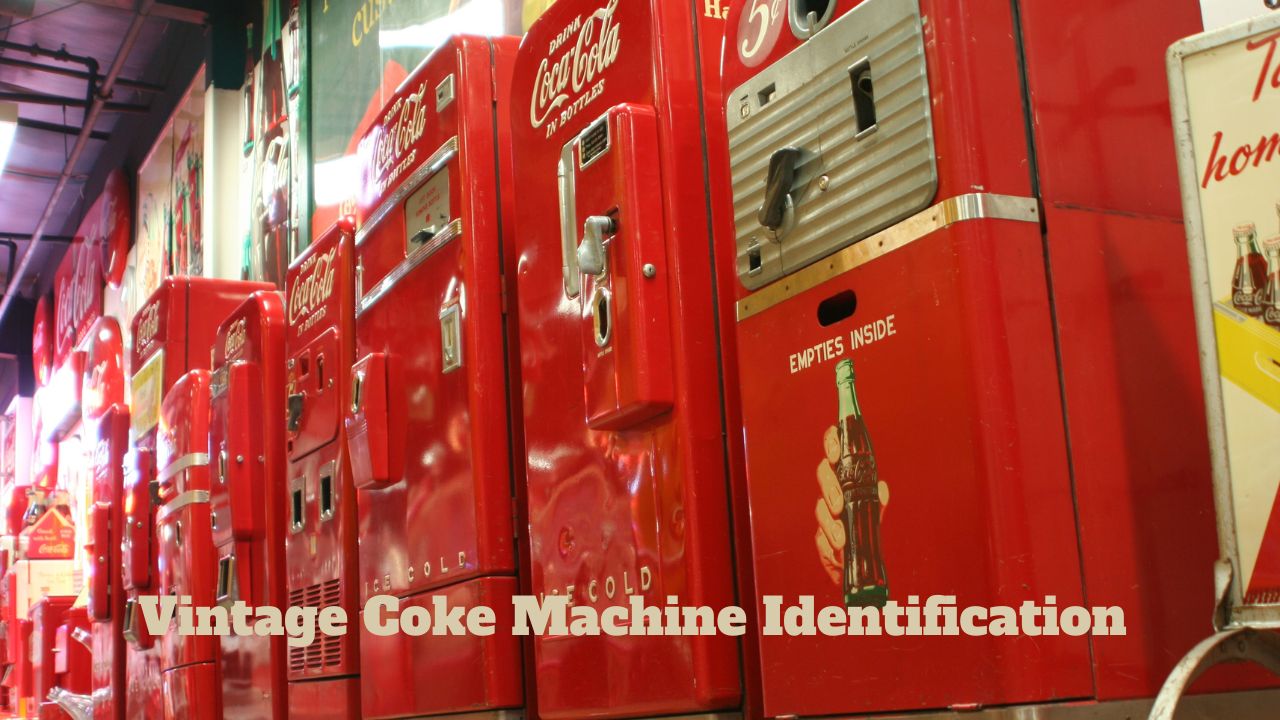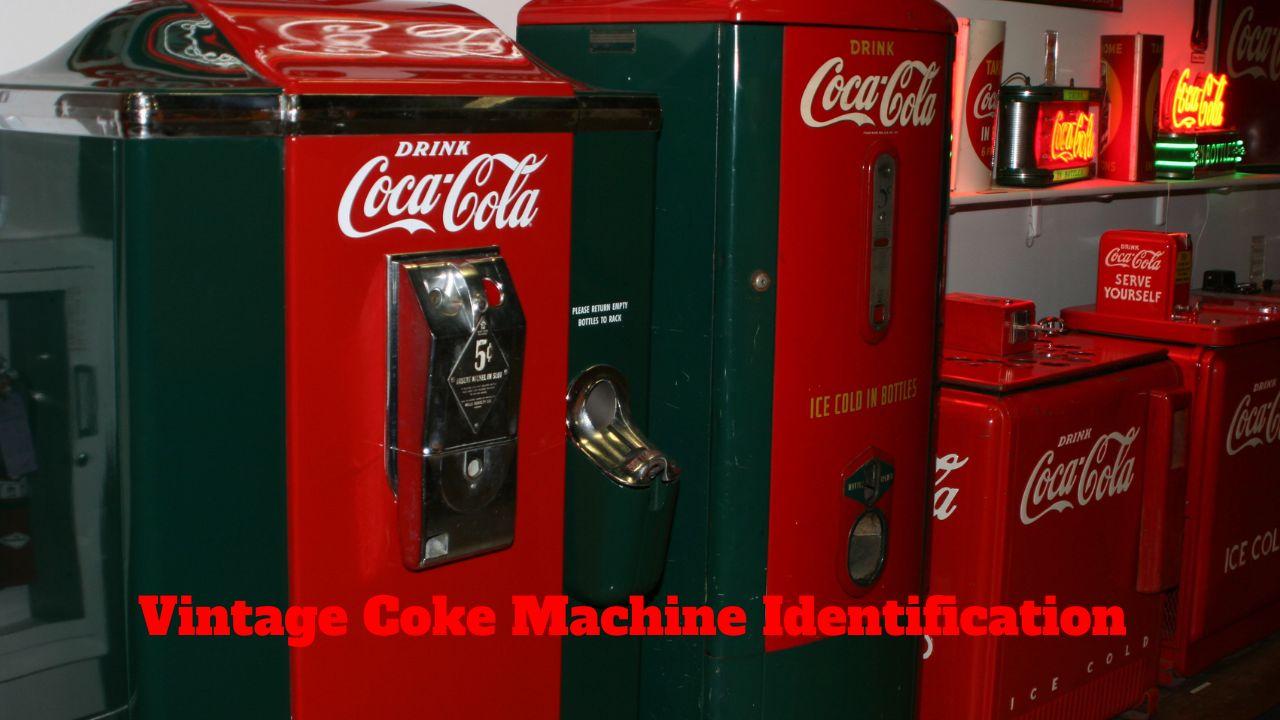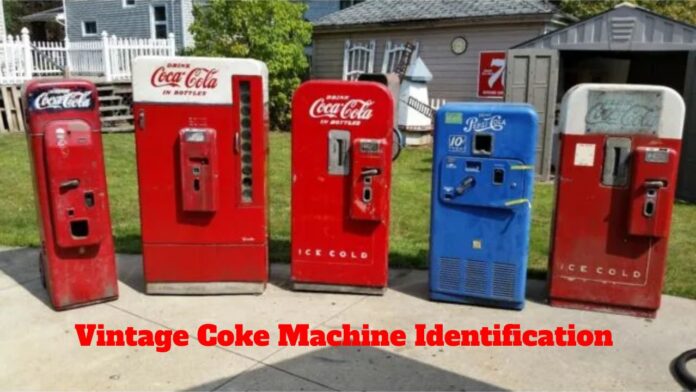Vintage Coke machine identification is an engaging pursuit for enthusiasts and collectors alike, delving into a rich history of Coca-Cola’s iconic branding and industrial design.These machines serve as tangible artifacts, encapsulating the evolution of advertising, manufacturing, and consumer culture. From the early 20th century’s modest vending units to the sleek, automated models of the mid-century, each iteration reflects technological advancements and shifting aesthetics.
Identification involves examining various elements, including design features, manufacturing labels, and specific model characteristics. Vintage Coke machines span a range of styles, from the classic “Vendo” and “Cavalier” models to the more ornate “Ideal” and “Westinghouse” designs. Understanding production years, regional variations and rarity adds layers to the identification process, making it a nuanced blend of historical research and detective work.
Beyond their nostalgic charm, vintage Coke machines offer insights into societal trends, marketing strategies, and Coca-Cola’s enduring appeal as a cultural icon. Unraveling the secrets of these timeless relics is a rewarding endeavor, whether for restoration projects, museum displays, or personal enjoyment.
Development of the Coca-Cola Vending Machine
The evolution of Coca-Cola vending machines is a fascinating journey through innovation, design, and consumer engagement. Beginning with simple, manually operated units in the late 19th century, Coca-Cola vending machines have continuously adapted to changing technological and cultural landscapes.
The early 20th century saw the introduction of coin-operated machines, revolutionizing accessibility and convenience for Coca-Cola enthusiasts worldwide. As the decades progressed, vending machines evolved from basic metal cabinets to sleek, automated models with advanced features like refrigeration and digital displays.
Each era brought forth new design trends and marketing strategies, reflecting the spirit of their time. From the iconic red and white branding to collaborations with artists and designers, Coca-Cola vending machines have remained at the forefront of innovation and visual appeal.
Today, Coca-Cola vending machines continue evolving, incorporating cutting-edge technology such as touchscreens, contactless payment options, and interactive experiences. As symbols of refreshment and convenience, these machines not only dispense beverages but also serve as cultural touchstones, connecting people across generations with the timeless joy of Coca-Cola.

Identifying Old Choke Machines
Identifying vintage Coke machines offers a captivating glimpse into the history of Coca-Cola’s iconic vending apparatus. Originating in the late 19th century, these machines evolved alongside advancements in manufacturing and marketing, reflecting consumers’ changing tastes and preferences.
Early models like the “Vendo” and “Cavalier” boasted simple yet elegant designs, often featuring glass fronts and classic Coca-Cola branding. Throughout the 20th century, technological innovations introduced coin-operated mechanisms, refrigeration systems, and distinctive styling elements, enhancing functionality and visual appeal.
Identification involves scrutinizing various details, including manufacturing labels, model numbers, and unique design features specific to each era. Collectors and enthusiasts pore over historical archives, vintage advertisements, and expert guides to authenticate and catalog these prized artifacts.
The allure of vintage Coke machines extends beyond nostalgia, offering valuable insights into advertising trends, industrial design, and Coca-Cola’s enduring legacy as a cultural phenomenon. We honor a bygone era by preserving and celebrating these relics while uncovering timeless stories of innovation and craftsmanship.
Types of Vintage Coke Machines
Vintage Coke machines encompass diverse designs and functionalities, reflecting the evolution of Coca-Cola vending technology over the decades. Early models from the late 19th and early 20th centuries, like the “Vendo” and “Ideal,” were often simple countertop units with glass fronts and manual dispensing mechanisms.
As technology advanced, so did the complexity and variety of Coke machines. The mid-20th century saw the rise of larger, freestanding models equipped with coin-operated mechanisms and refrigeration systems, such as the “Cavalier” and “Westinghouse” series.
Additionally, Coca-Cola introduced specialized machines for specific purposes, such as the “Cooler Vendor” for outdoor use and the “Slider” for tight spaces. These machines often featured unique design elements tailored to their intended environments.
Coca-Cola vending technology has a rich history, and continuing appeal, and collectors and enthusiasts have created a diversified landscape of sought-after collectibles by categorizing old Coke machines based on variables like size, appearance, and production date.
Key Features of Vintage Coke Machines
Vintage Coke machines are distinguished by several key features contributing to their iconic status and appeal among collectors and enthusiasts. One notable feature is their design, often characterized by bold Coca-Cola branding, vibrant colors, and sleek lines that reflect the aesthetic trends of their respective eras.
Another defining aspect is functionality. Early models featured manual dispensing mechanisms that evolved into coin-operated and refrigerated systems in later iterations. These machines were designed for durability and reliability, often constructed from sturdy materials like metal and glass to withstand frequent use and outdoor conditions.
Moreover, vintage Coke machines often include distinctive elements such as embossed logos, illuminated signage, and decorative accents that add to their visual allure. These features enhance the machines’ aesthetic appeal and contribute to their historical significance and cultural resonance as symbols of refreshment and nostalgia. Collectors and enthusiasts value these unique characteristics, which showcase the craftsmanship and ingenuity behind each vintage Coke machine.
Serial Numbers and Model Codes
Researching serial numbers and model codes is essential for authenticating and dating vintage Coke machines, providing valuable insights into their history and rarity. Serial numbers typically indicate the machine’s manufacturing date, production facility, and sometimes even the specific model variant.
By cross-referencing serial numbers with historical records and manufacturer databases, collectors and enthusiasts can determine the age and authenticity of their machines, as well as identify any special editions or variants. Additionally, decoding model codes reveals specific features, variations, and production runs associated with each model.

Online forums, collector communities, and dedicated websites are valuable resources for sharing information and decoding serial numbers and model codes. These collaborative efforts help enthusiasts accurately document and preserve the heritage of vintage Coke machines, ensuring that their historical significance and cultural legacy endure for future generations.
Materials and Construction of Vintage Coke Machines
Vintage Coke machines are renowned for their sturdy construction and durable materials, reflecting an era when craftsmanship and longevity were paramount. These machines were primarily constructed from robust materials like steel, aluminum, and cast iron, ensuring resilience against wear and tear.
The exteriors often featured vibrant enamel finishes, showcasing the iconic Coca-Cola branding and logo. Glass panels provided visibility of the bottles or cans inside. At the same time, chrome accents added a touch of elegance and contrast.
Internally, vintage Coke machines boasted ingenious mechanisms for dispensing beverages, often including coin-operated systems and refrigeration units to keep drinks cold and refreshing. These components were engineered with precision and reliability, ensuring smooth operation over years of use.
Moreover, many vintage Coke machines were designed for versatility, with modular components facilitating maintenance and repair. This attention to detail and quality craftsmanship contributed to vintage Coke machines’ enduring popularity and collectibility, preserving their legacy as cherished artifacts of American industrial design and cultural history.
Restoring and Preserving Vintage Coke Machines
Vintage Coke machine restoration and preservation are love labors requiring meticulous attention to detail and craftsmanship. Collectors and enthusiasts undertake a multi-step process to breathe new life into these iconic artifacts while maintaining their historical integrity.
Restoration typically begins with disassembly, cleaning, and repairing or replacing damaged components. This may involve repainting the exterior to restore its original vibrancy and luster and refurbishing internal mechanisms to ensure proper function.
Preservation efforts focus on protecting the restored machine from further deterioration. This includes applying protective coatings to prevent rust and corrosion, as well as implementing climate control measures to maintain optimal storage conditions.
Documenting the restoration process through photographs and records helps preserve the machine’s provenance and historical significance. Additionally, educating others about the restoration process and the history of vintage Coke machines ensures that their cultural legacy endures for future generations to appreciate.

Documenting and Cataloging Vintage Coke Machines
Documenting and cataloging vintage Coke machines is essential for preserving their history and cultural significance. Enthusiasts meticulously record serial numbers, model codes, and manufacturing dates to create comprehensive records of each machine’s provenance.
Photographs are crucial in documenting the machine’s condition before and after restoration, capturing unique features, and identifying marks. Detailed notes accompany these images, providing insights into the restoration process and any historical research conducted.
Cataloging vintage Coke machines involves organizing this information into searchable databases or archives, making it accessible to collectors, historians, and enthusiasts worldwide. Online platforms, forums, and specialized publications are valuable resources for sharing knowledge and connecting with like-minded individuals.
By documenting and cataloging vintage Coke machines, enthusiasts ensure these cherished artifacts are preserved for future generations. These records also contribute to a deeper understanding of Coca-Cola’s rich history and enduring impact on popular culture.
Vintage Coke Machine on Display
Displaying vintage Coke machines requires careful consideration of space, lighting, and aesthetics to showcase these iconic artifacts effectively. One approach is to create a dedicated area that highlights the machines as focal points, such as a themed room or retro-inspired bar.
Positioning the machines strategically ensures maximum visibility and accessibility while complementing the overall decor. Utilizing appropriate lighting, such as spotlights or LED strips, enhances the machines’ visual appeal and draws attention to their distinctive features.
Consider incorporating thematic elements, such as vintage Coca-Cola signage, memorabilia, and collectibles, to create a cohesive display that tells a story about the brand’s history and cultural impact.
To protect the machines from damage and maintain their condition, use display cases or barriers to prevent accidental bumps or scratches. Regular cleaning and maintenance are essential to preserve the machines‘ appearance and functionality.
Whether in a home, business, or museum setting, displaying vintage Coke machines adds a touch of nostalgia and charm while celebrating the enduring legacy of Coca-Cola as an iconic American brand.
Recognizing Regional Variations in Vintage Coke Machines
Recognizing regional variations in vintage Coke machines adds depth to understanding Coca-Cola’s global impact and the diverse preferences of consumers worldwide. Different regions often had unique designs, features, and branding tailored to local tastes and market demands.
For example, machines produced for urban areas might have sleeker, modern designs, while those for rural communities prioritize durability and functionality. Additionally, variations in language, cultural symbols, and advertising campaigns are evident in regional models.
Collectors and enthusiasts study historical archives, manufacturer records, and anecdotal evidence to identify these regional differences. Online forums and collector communities facilitate discussions and exchanges of information, shedding light on obscure variants and rare finds worldwide.
Recognizing regional variations enriches collectors’ experiences and highlights Coca-Cola’s adaptability and universal appeal. These variations serve as reminders of the brand’s global reach and enduring presence in cultures and communities across continents.
Conclusion
Vintage Coke machine identification is more than a hobby—a journey through time, culture, and craftsmanship. Each machine tells a story, from its humble beginnings in the late 19th century to its evolution into iconic symbols of American pop culture. Through diligent research, collectors, and enthusiasts uncover the secrets of serial numbers, model codes, and regional variations, piecing together the puzzle of each machine’s history and significance.
The process of identification not only deepens our appreciation for the ingenuity and design excellence of these artifacts and offers insights into broader societal trends and marketing strategies. Moreover, documenting and preserving these machines ensures that their legacy endures for future generations to enjoy and learn from. Vintage Coke machine identification celebrates nostalgia, craftsmanship, and the enduring allure of Coca-Cola—a journey worth embarking on for anyone passionate about history and culture.
FAQ
How can I identify the age of a vintage Coke machine?
One way to determine the age of a vintage Coke machine is to locate and decode the serial number. These numbers often contain information about the manufacturing date and location.
Are there particular characteristics or design cues that set apart the various antique Coke machine eras?
Yes, vintage Coke machines evolved, reflecting changes in technology and design trends. Early models may have manual dispensing mechanisms and simple designs, while later models feature coin-operated systems, refrigeration, and sleeker aesthetics.
Where can I find resources or guides to help me identify and authenticate vintage Coke machines?
Online forums, collector communities, and specialized websites dedicated to Coca-Cola memorabilia are valuable resources. Additionally, books and guides provide detailed information on identifying and restoring vintage Coke machines.
Are there regional variations in vintage Coke machines?
Yes, Coca-Cola produced machines tailored to different regions, incorporating design, branding, and feature variations to suit local preferences and market demands.
What are some common challenges in identifying and restoring vintage Coke machines?
Challenges may include:
- Deciphering faded or incomplete serial numbers.
- Sourcing replacement parts.
- Accurately dating machines with limited historical documentation.
However, these challenges can often be overcome with patience, research, and attention to detail.

